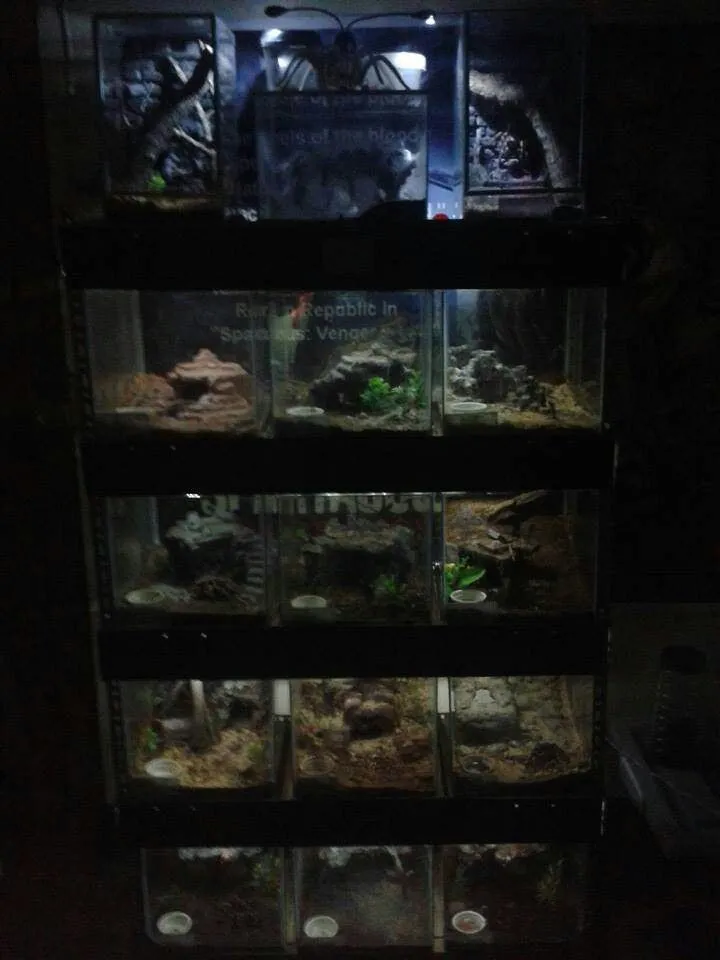Top 5 Tarantula Enclosures for Snakes
Choosing the right tarantula enclosure is crucial for the health and well-being of your snake. A well-designed enclosure provides a secure, comfortable, and stimulating environment, allowing your pet to thrive. When selecting an enclosure, it is important to consider factors such as security, ventilation, humidity control, size, and ease of maintenance. Moreover, the aesthetic appeal of the enclosure plays a vital role in your overall satisfaction and enjoyment of your pet. This guide will highlight the top 5 tarantula enclosures for snakes, focusing on their key features and benefits to help you make the best choice for your reptile companion. By understanding the key elements of a good enclosure, you can create an optimal living space that promotes a happy and healthy snake.
1. Secure and Escape-Proof Design
The primary function of any snake enclosure is to provide a secure and escape-proof environment. Snakes are notorious escape artists, and a poorly designed enclosure can lead to a lost pet and potential safety hazards. A secure enclosure has a tight-fitting lid, secure locks or latches, and no gaps or openings that a snake could exploit. Furthermore, the enclosure’s construction materials should be robust enough to withstand any attempts by the snake to break out. Investing in a high-quality enclosure with these features provides peace of mind, knowing that your snake is safe and contained. It also reduces the stress on your snake, as it feels secure in its habitat. When selecting an enclosure, check for secure closure mechanisms, durable materials, and thorough sealing to ensure that your snake cannot escape. Proper security is fundamental for responsible snake ownership.
Why Escape-Proof Matters
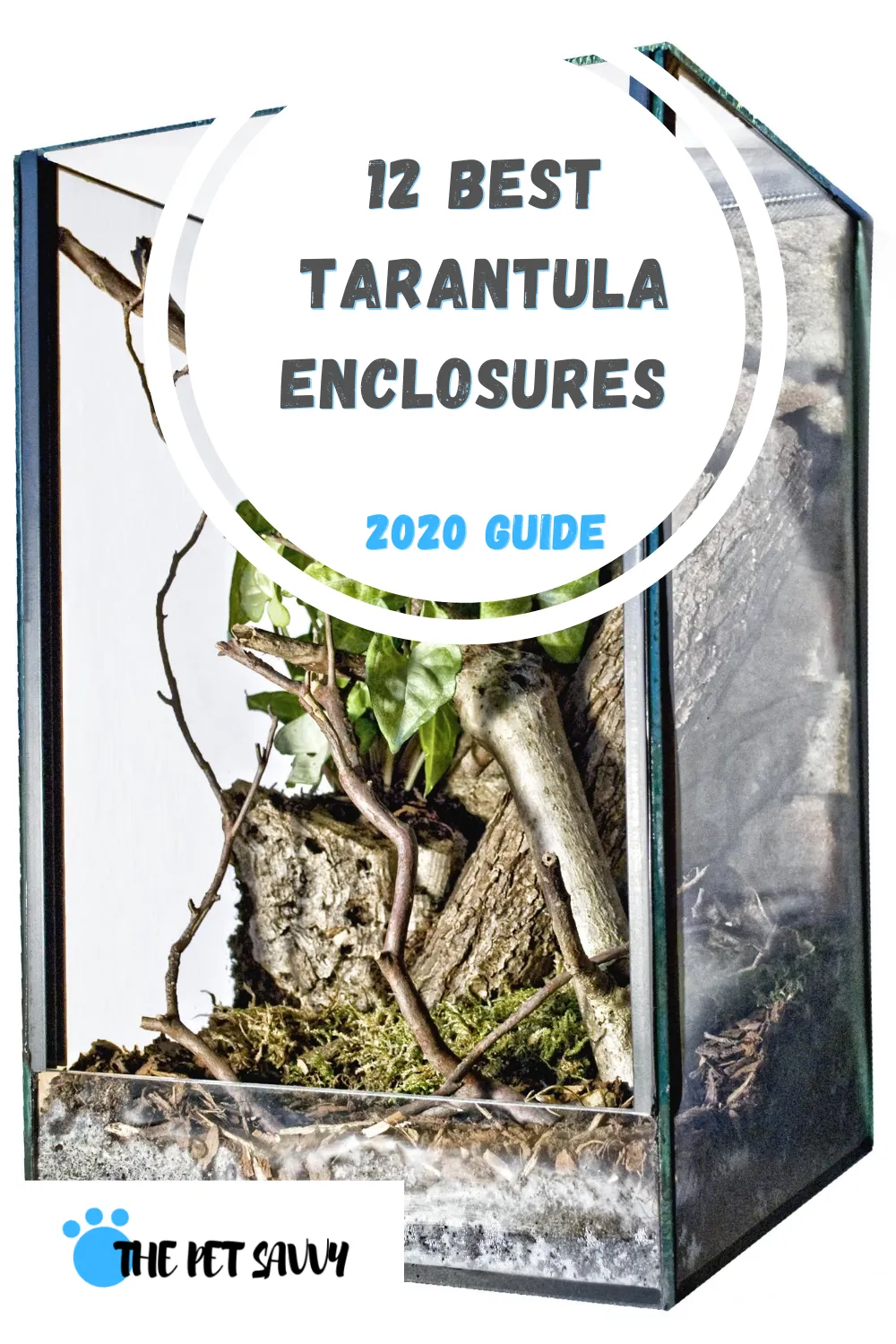
Escape-proof design is paramount for several critical reasons. Firstly, it ensures the safety of the snake itself. A snake that escapes can be exposed to dangerous environments, such as extreme temperatures, predators, or toxic substances. Secondly, it safeguards the occupants of your home. A loose snake can cause alarm and distress, especially if there are children or other pets in the household. Finally, a secure enclosure prevents legal issues. Many jurisdictions have laws regarding the containment of exotic animals, and an escaped snake could lead to fines or other penalties. Choosing an enclosure that prioritizes escape prevention not only protects the well-being of your snake but also protects your family and your home.
Materials and Construction
The materials used in the construction of a tarantula enclosure play a crucial role in its security and longevity. Glass and acrylic are popular choices for enclosures because they offer excellent visibility and are easy to clean. However, it is essential to ensure that the enclosure is constructed with high-quality materials that are not easily damaged or compromised by the snake. Look for enclosures with sturdy frames, secure joints, and tight-fitting lids. Avoid enclosures made from flimsy materials or with weak closures. It’s also important to consider the durability of the materials, as they need to withstand potential scratching or chewing by the snake. The best enclosures are made from durable materials that are non-toxic and safe for the snake. Always prioritize the quality of materials for long-term safety and security of your pet.
2. Ventilation and Humidity Control
Proper ventilation and humidity control are essential for maintaining a healthy environment for your snake. Adequate airflow helps to prevent the buildup of harmful bacteria and mold, while maintaining the correct humidity level prevents respiratory infections and promotes proper shedding. The enclosure should have well-designed ventilation features, such as screened vents or strategically placed air holes, to ensure good air circulation without compromising humidity levels. Monitoring humidity is critical, and using a hygrometer is recommended to make sure the levels remain within the optimal range for your snake species. Without adequate ventilation and humidity control, a snake is susceptible to illness and discomfort, which can seriously affect its health and longevity. Choosing an enclosure with carefully designed ventilation and monitoring capabilities is essential for responsible snake care.
Airflow Requirements for Tarantulas
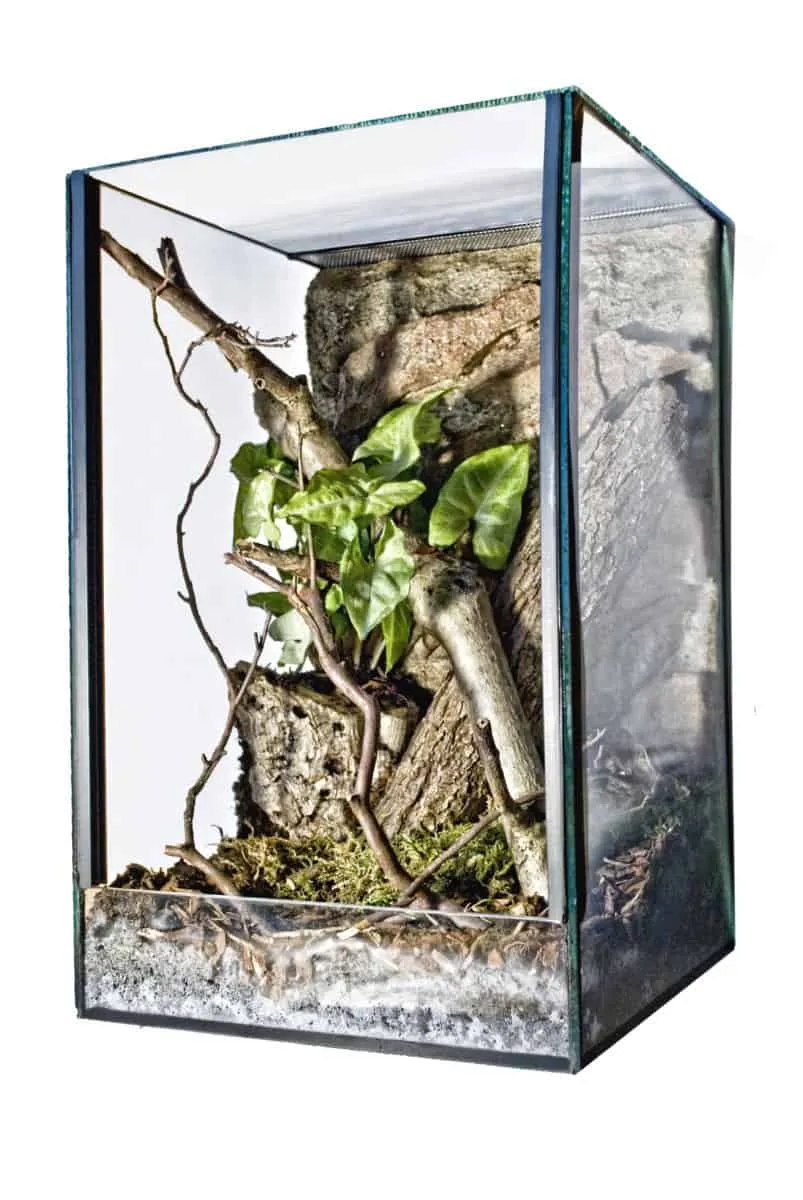
Tarantulas, like all living creatures, need fresh air. Proper ventilation is crucial for preventing the buildup of stale air and promoting healthy respiratory function. The enclosure should have strategically placed vents that allow for good airflow without causing excessive humidity loss. Good airflow helps to remove the buildup of ammonia and other harmful gases produced by waste, and it also reduces the risk of fungal infections, which can be detrimental to the tarantula’s health. Enclosures should have ventilation on multiple sides to ensure even air circulation and to avoid stagnant air pockets. By ensuring adequate ventilation, you can contribute significantly to your pet’s overall well-being, creating a healthier and safer living environment.
Maintaining Optimal Humidity Levels
Maintaining the appropriate humidity level is essential for the health of your snake, as different species have specific humidity requirements. Low humidity can cause shedding problems, dehydration, and respiratory issues, while excessive humidity can lead to mold growth and skin infections. The ideal humidity range is usually between 50% and 70%, though it varies with species. To maintain optimal humidity, use a hygrometer to monitor levels and adjust as needed. You can increase humidity by misting the enclosure with water, adding a water bowl, or using a substrate that retains moisture. To reduce humidity, increase ventilation or use a dehumidifier. Regularly checking and adjusting the humidity levels is a critical part of responsible snake care.
3. Size and Space Requirements
The size of the tarantula enclosure is a crucial factor in ensuring the snake’s well-being. A too-small enclosure can restrict the snake’s movement, leading to stress and health problems, while a too-large enclosure can make it difficult for the snake to find food or feel secure. The enclosure should be large enough to allow the snake to move freely, explore its environment, and exhibit natural behaviors. It should also provide space for the snake to thermoregulate, which means to move to areas of different temperatures to regulate its body temperature. A properly sized enclosure will also accommodate the necessary accessories, such as a water bowl, hide box, and substrate. Choosing the correct size ensures your snake has a comfortable and stimulating living space.
Choosing the Right Size Enclosure
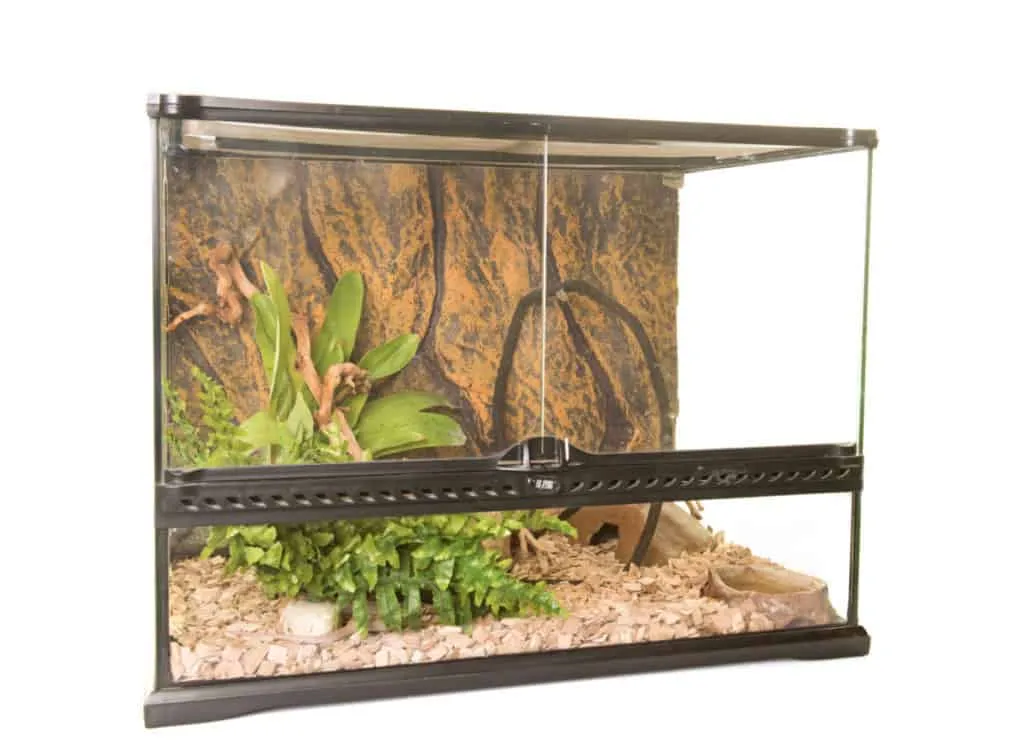
Determining the right size enclosure depends on the species of snake and its adult size. As a general rule, the enclosure should be long enough for the snake to stretch out fully, and wide enough to allow for turning around. Many experts recommend that the length of the enclosure should be at least the same length as the snake, or slightly longer. Juvenile snakes require smaller enclosures, as a larger space can be overwhelming and stressful. However, you will need to upgrade to a larger enclosure as the snake grows. Researching the specific needs of your snake species is very important and helps you to provide an ideal living space.
Factors to Consider
Several factors affect the size of the enclosure that is ideal for your snake. Consider the specific species, as some snakes are more active than others and will require more space. The size of the snake when fully grown is another significant factor. If you are getting a juvenile snake, you will need to anticipate its growth and plan accordingly. The snake’s natural habitat can help to determine the size and shape of the enclosure. Some species prefer vertical space, while others prefer more horizontal space. The presence of other objects, such as hide boxes and décor, will also affect the usable space within the enclosure. By considering these factors, you can choose an enclosure size that supports a happy and healthy environment.
4. Easy Access and Maintenance
Choosing an enclosure that provides easy access for feeding, cleaning, and interacting with your snake can greatly simplify the process of pet ownership. A well-designed enclosure allows easy access for feeding and watering, removing waste, and replacing the substrate. This reduces the time and effort required for maintenance and helps to maintain a clean and hygienic environment for your snake. Easy access features include doors or lids that open wide, convenient feeding ports, and removable components. An enclosure with easy access to the interior makes it easier to interact with your pet and monitor its well-being. Regular cleaning and maintenance is essential for your snake’s health, and a user-friendly design will make your routine simpler and more enjoyable.
Features for Feeding and Cleaning
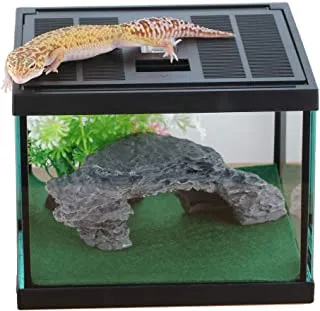
Enclosures should include features that simplify feeding and cleaning. Feeding ports allow you to provide food and water without having to open the entire enclosure, reducing the risk of escape. Easy-to-remove water bowls and feeding dishes simplify cleaning. The enclosure should also have a design that allows for easy access to all areas. Consider enclosures with removable substrate trays, which make it easier to replace the substrate. The top-opening designs provide excellent access, making it easier to clean the interior and spot-clean waste. Prioritizing these elements simplifies your maintenance routine and keeps your snake enclosure clean and healthy.
Substrate Management
Substrate management is an integral part of maintaining a clean and healthy environment for your snake. The substrate acts as a bedding, absorbs waste, and helps to regulate humidity. Enclosures with easily removable substrates are ideal. Look for features such as removable trays or designs that allow you to easily scoop out soiled substrate. The choice of substrate affects how often you need to clean the enclosure. Some substrates require more frequent changes than others. Using a substrate that is easy to clean and replace will make your maintenance routine less laborious and ensure a healthy habitat for your snake.
5. Aesthetics and Viewing
The aesthetics of the enclosure and the ability to easily view your snake enhance the overall enjoyment of snake ownership. A well-designed enclosure not only provides a functional living space but also adds to the visual appeal of your home. Clear and transparent materials, like glass or acrylic, allow you to observe your snake’s behavior and appreciate its beauty. Incorporating naturalistic elements, such as branches, rocks, and plants, can create a visually stunning and enriching environment for your snake. Consider the overall design of the enclosure and how it complements your home decor. A visually appealing enclosure also provides a more stimulating environment for your snake, encouraging natural behaviors and reducing stress.
Transparent Materials and Design
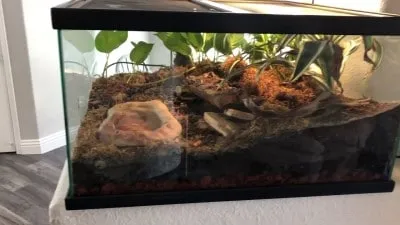
The use of transparent materials, such as glass or acrylic, is crucial for viewing and monitoring your snake’s behavior. These materials allow for unobstructed views of the snake, which is essential for observing its health, activity level, and overall well-being. Transparent enclosures also allow you to monitor the conditions inside, such as temperature and humidity, at a glance. In addition to transparency, consider the design of the enclosure. Look for enclosures with features that enhance viewing, such as front-opening doors or large viewing panels. The placement of vents and other features should not obstruct your view. The best enclosures combine functionality with visual appeal, providing a clear and enjoyable viewing experience.
Creating a Natural Habitat
Creating a natural habitat within the enclosure is essential for your snake’s well-being, as it enriches its environment and stimulates natural behaviors. This can involve adding elements such as branches for climbing, rocks for hiding, and live or artificial plants to provide cover and enrichment. These additions provide mental stimulation and opportunities for exercise, promoting physical and psychological health. Substrate choices, such as naturalistic bedding or bioactive setups, can contribute to the creation of a more natural environment. It is also important to consider the snake’s species and its natural habitat. Replicating elements of the natural habitat can greatly enhance your pet’s quality of life and provide a more fulfilling experience for both you and your snake.
